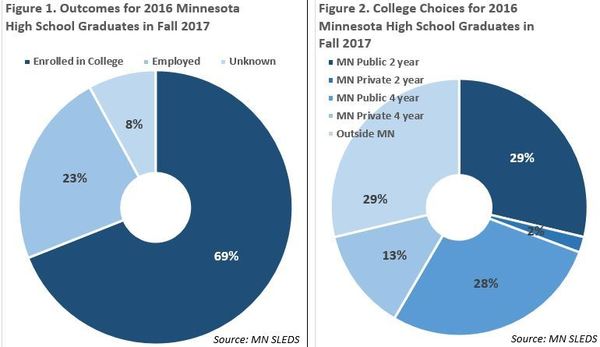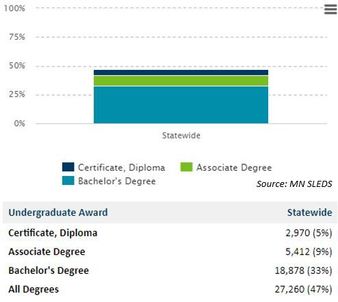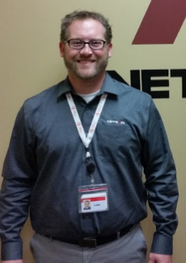Dislocated Worker Video
The Minnesota Dislocated Worker program has a new video! Please feel free to share with clients and your personal networks.
TAA Updates
Request for contact information
Thank you to those who sent contact
information to us in May. TAA is requesting lists of Dislocated Worker
counselors, support staff to the DW program, and supervisory staff. If you
haven’t yet, please send them to deed.taa@state.mn.us
Avoid case notes that say, “see
case file”
TAA Specialists rely heavily on DW
Counselors’ case notes in WF1. In order for TAA to know the customer’s
situation, please have succinct and thorough case notes, and avoid referencing
the case file because TAA doesn’t have access to the DW file. Remember to keep
medical or health information out of case notes.
Remember Job Search, Relocation,
and RTAA (wage subsidy) benefits for recent grads
As you congratulate your Spring
2018 graduates, remind them of the Job Search and Relocation Allowance
benefits, and for customers age 50 and over, the RTAA wage subsidy benefits.
Customers can use these benefits in addition to the training and now is the
perfect time for them to access these benefits! See applications on the
Counselor Portal: https://mn.gov/deed/programs-services/dislocated-worker/counselors/forms/
Let’s shine a spotlight on Success Stories!
DW & TAA programs have
exceptional results so let’s showcase our Success Stories! Please invite
customers to share their experience, to inspire others who are considering
training and/or facing a layoff. Email deed.taa@state.mn.us for sample questions
to ask customers, or if you’d like TAA to send the questions directly to the
customer. We’ll need this signed release form.
Thank you!
Grants and Policy Update
New Team Member – Claudia Ursulescu Kracht
The Dislocated Worker/WIOA Adult program is very excited to
welcome Claudia to our team as a Senior Grants Specialist. Claudia will be
taking over the federally-funded grants while Monica will continue to work with
our state-funded grants. Please begin including Claudia on your communications
to the grants team (Claudia.Ursulescu.Kracht@state.mn.us).
National Health Emergency Dislocated Worker
Demonstration Grant
If your organization is interested in applying for
National Health Emergency grant funds, we have extended the mini-app deadline.
Your “mini-apps” are now due to DEED staff no later than June 15, 2018.
Eligible providers for National Dislocated Worker Grants (NDWGs) are limited to
Workforce Development Areas. For more information or questions on grant
requirements, please contact Chelsea Georgesen (Chelsea.s.georgesen@state.mn.us).
Definition of an “Obligation”
DOL
defines an obligation as “orders placed for property and services, contracts
and subawards made, and similar transactions during a given period that require
payment by the non-Federal entity during the same or future period (2 CFR 200.71)”.
From a grantee’s standpoint, any support service or training
dollars you’ve agreed to pay for a client would be an obligation. The
grantee should have documentation authorizing the purchase and showing the dollar
amount associated with it (the grantee cannot just estimate these
costs). Salary costs are never considered an obligation. If a local
provider chooses to give some of their funds to a separate entity as a
sub-contract or sub-grant to perform core services, all of those funds would be
considered an obligation. The grantee must have a fully executed
sub-contract in place with the other entity as backup documentation.
Career Services
versus Training Services
Career Services: Career Services are defined by
WIOA Final Rules and Regulations (20 CFR 678.430 and 20 CFR 680.100 – 195)
and include eligibility determination, outreach and intake, initial skill
assessments, job search and placement assistance, career counseling, workshops,
recruitment, coordination of activities with other programs, job vacancy
listings, work experience/internships, prevocational activities and work
readiness activities. Career services include Basic Career Services,
Individualized Career Services, and Follow-up Services. Career Services
activities include, but aren’t limited to:
·
Individual Plan Development
·
Staff Assisted Assessments
·
Staff Assisted Job Search
·
Career Counseling
·
Work Experience/Transitional Jobs
·
Pre-vocational services
·
Work Readiness Services/Workforce Preparation
Activities
Direct Customer
Training Services: Training
services, when determined appropriate, must be provided either through an
Individual Training Account (ITA) or through a separate training contract.
Training services must be provided by a provider listed on the State
Eligible Training Provider and Program List (ETPL) for federal funds, or
must be Office of Higher Education (OHE)-compliant for state funds, unless the
training is on-the-job training, customized training, and incumbent worker
training, which are excluded under federal law and state policy. If any WIOA
funds are used for any of participant’s activities, even if they are accessing
state funds for training and WIOA funds for other services, the training must
be listed on the ETPL per federal requirements. Direct Customer Training costs
include any tuition, books, fees, on-the-job
training reimbursements, participant wages & fringes, and other training
services provided directly on the participant’s behalf. Staff costs cannot be
paid for using Direct Customer Training funds. Direct Customer Training
Activities include, but aren’t limited to:
·
CLIMB
Training
·
Classroom
(Credentialed) Training
·
Customized
Training
·
Incumbent
Worker Training
·
Non-Credentialed
Training
·
OJTs
·
Registered
Apprenticeships
Reminder! Workforce One Training Available
If your
organization is interested in Workforce One training, it is available (for
free!) from the Workforce One program staff. To see a list of upcoming
trainings, or to register for trainings, log in to Workforce One and click on
“Resources” -> “Staff Training” -> “Run Search”. Examples of trainings
include:
·
DHS Programs Case Management Training
·
ETP Programs Case Management Training
·
Reports and Advanced Search Training
·
Security Administrator Training
Performance Updates
DEED staff along with Deb Bahr-Helgen (METP) and Dan Wenner
(Rural CEP) negotiated PY18 and PY19 state performance standards with the
Department of Labor on May 10, 2018. Below are the agreed upon WIOA Adult and
Dislocated Worker performance standards.
 As of March 31, 2018, Program Year 2017 performance outcomes
look strong in both State and WIOA funded Dislocated Worker programs as well as
the WIOA Adult program.

The threshold for
performance failure is
·
90 percent of the adjusted level of performance
for the overall State program score
·
90 percent of the overall State indicator score
·
50 percent of the adjusted level of performance
on any individual indicator for any individual program
 Corner On The Market
With Cameron Macht
Regional Analysis & Outreach Manager
Minnesota Dept. of Employment & Economic Development
cameron.macht@state.mn.us
320-441-6596
|
Pomp and Circumstance
As the school year comes to a close, tens of thousands of
high school students are preparing to walk across the stage to receive their
diplomas. In 2016, just under 58,000 students graduated from high schools in
Minnesota, ready to turn their educational and career dreams into reality.
Results from Minnesota’s
Statewide Longitudinal Education Data System (SLEDS) provide insight into
what these students actually do upon graduation. In Minnesota, 69 percent of
last year’s graduates enrolled in college in the fall, while 23 percent found
jobs and started working. Results for the remaining 8 percent were unknown because
those students may have moved outside the state, not joined the labor force, or
became self-employed, or something else (see Figure 1).
Of the nearly 70 percent of students who immediately went to
college, about 70 percent decided to stay within Minnesota for their schooling.
Just over 11,700 graduates (29%) chose to attend a public 2-year state community
or technical college, another 11,200 graduates (28%) enrolled at public 4-year
universities, and about 5,700 graduates (15%) picked private colleges and
universities. Just over 11,400 graduates
(29%) chose to attend schools outside Minnesota, primarily in North Dakota,
Wisconsin, Iowa, and South Dakota (see Figure 2).

Encouragingly, about 81 percent of Minnesota graduates who
transitioned directly to college persisted into their second academic year.
This persistence appears to pay off over time as well, with most students eventually
completing a degree or certificate. Looking back at the results for students
from the 2012 graduating class (in order to give these students time to attend
and complete college), Minnesota students fare relatively well in persistence
and completion.
For the 2012 cohort, just under 50 percent of Minnesota
graduates completed a degree or certificate by 2017. The largest number of
graduates completed bachelor’s degrees, followed by associate degrees and
certificates and diplomas (see Figure 3).
Figure 3. Percentage of 2012 Minnesota High School
Graduates
Completing a Degree or Certificate at Any Time Minnesota

Many of these students are
responding to the educational requirements of employment
opportunities in the state – there
were high levels of demand for jobs across the entire
educational spectrum. With all of
these options available, SLEDS data
can provide insight into what graduating seniors are doing to prepare their
path to workforce success.
Success Story

Luke, Career Solutions
Before enrolling into Dislocated Worker Program, Luke was a carpenter. He had surgery on his back, and then his
position was eliminated due to company restructuring. Luke knew he needed to make a career change. He knew he would be able to succeed in the IT
field but he needed some formal training/ education to gain a position. Luke thought maybe the DW program would be
able to help him. Through the DW
Program, Luke was able to take the NCRC exam and Compute-A-Match career assessment,
receive career counseling and guidance along with assistance with school
programs/ offerings and tuition funding for a program which he is
passionate. Now that Luke has completed
the program, he says he is “more focused on his family, future goals and
plans.” Luke said he is “more driven in
his new career path and is very passionate about his career choice.” Luke is now an Information Security Analyst
at Netgain in St. Cloud. He said the
most helpful services of the Dislocated Worker Program were the career
exploration guidance from his career planner and tuition assistance. He said he would definitely recommend the
Dislocated Worker Program to other workers who lose their jobs.
|
We want this e-Newsletter to meet your needs! We encourage you to send your comments and suggestions to Liz.McLoone@state.mn.us,
Find past issues of Partner's Express here.
Wanting to subscribe to this newsletter? Contact Liz McLoone at Liz.McLoone@state.mn.us with your request!
UNIT DIRECTORY
Jackie Buck-Director of Employer
Services (Rapid Response), 651-259-7598
Nancy Omondi-Director of Adult
Programs (WIOA Adult, Dislocated Worker, TAA, and Career Pathways),
651-259-7525
Rapid Response
General
RR Contact, 651-259-7537
Marla Beaty-TAA
Liaison, 218-259-1380
Mo Malin-Senior Specialist, 651-259-7535
Liz McLoone-Labor Liaison, 651-259-7145
Jason Wadell-Senior Specialist, 651-259-7552
Mee Yang-Senior Specialist, 651-259-7548
Dislocated Worker and Federal Adult Programs Team
Chelsea Georgesen – Supervisor, 651-259,7508
Amy Carlson – Performance Lead, 651-259-7542
Karen Backlund – Monitor, 651-259-7559
Monica Weber – Grants Specialist Senior, State Grants,
651-259-7560
Claudia Ursulescu Kracht – Grants Specialist Senior,
Federal Grants, 651-259-7532
TAA
General TAA Contact, 651-259-7543
or 888-234-1330
Sarah Saito-TAA Supervisor, 651-259-7546
Cindy Boyle-Senior TAA Specialist, 651-259-7551
Jennifer Anderson-TAA Specialist, 651-259-7690
Mary Garcia-TAA Specialist, 651-259-7553
Laurie Larson-TAA Specialist, 651-259-7681
Thomas Sommer-TAA Specialist, 651-259-7585
Jackie Umlauf-TAA Specialist, 218-739-7560
Olajide Williams-TAA Specialist, 651-259-7431
Trade
Readjustment Allowance, 651-296-3644 or 877-898-9090 (ask for TRA
Specialist)
|